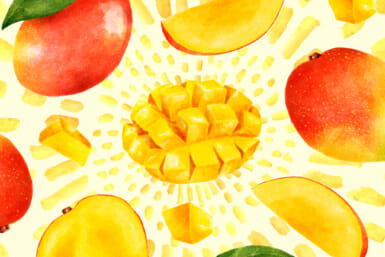Did you ever wonder where all that food came from?
I wonder what Indian cuisine would be like if Columbus had not discovered America. What would the Indians be doing to spark up their curries? Probably using heaps of black peppers; for, where chilics originated in Central America, black pepper was first cultivated in India.
I also wonder where Italian cuisine would be if the New World still lay undiscovered. What would Italians do without their tomatoes which are native to South America?
What would the Irish be doing without their spuds and the United States without its Kennedys, whose forebears emigrated from Ireland during a potato famine. For the potato hails from the Andes.
What didn’t originate in America is the banana, though some Central American countries were once called “banana republics,” because of the inordinate political influence of the United Fruit Company. The banana is a native of India, from where it spread across the tropics and sub-tropics of the world. From the Canary Islands it was brought to America, where it became a staple.
Another entrant into the gastronomic world from America is the turkey. Specifically it originated as a barnyard fowl in Mexico. From Mexico it went to South America and then to Europe, brought by the Spaniards. It returned to America with the English colonists and became the popular bird at family Thanksgiving dinners.
India claims the honor of having domesticated the chicken, which had been living the free but dangerous life of a red jungle fowl. It was probably brought to Europe by Alexander the Great’s troops to become eventually the reputed mainstay of the Kentucky dining table.
But back to the plants, the coconut which has spread itself worldwide, originated in the Indo-Malayan area. Coconuts are watertight and love beaches. When they drop into the water, they float to the first beach that will take them and implant themselves in the shallow sand. It may be the only plant that is self-spread.
We all know that tea originated in China, but how many know that the first pot was made as far back as 2700 B.C. That’s what the Chinese say. The Chinese also gave it its unversal name, cha, which became tea in English, the in French, tee in German, etc.
Coffee is believed to have been first cultivated in Kaffa, a province in southwest Ethiopia; hence, its name, according to some etymologists. But the general consensus is that it comes from the Arabic, qahwah, as the Arabs were the ones to spread the habit around.
The story of its discovery goes this way: In 850 A.D. a young Ethiopian goatherd, Kalki, noticed his charges acting in an excited manner. Curious to see the cause of the strange behavior, he inspected the shrubs on which they were feeding and found they were covered with red berries. Well, he figured, if these berries did it to his goats, maybe they will do it to him and liven up his dull life.
So he chewed a few and underwent a marvelous change. The colors seemed brighter, the sounds lovelier and louder and, well, he tripped out. When he came to, he rushed back to his village shouting his discovery.
Coffee is not the only word the Arabs gave us. Alcohol also comes from the Arabic, al kuhl, not because the Arabs invented distillation, which had been known to the Greeks and Romans, but because the Europeans look renewed interest in it after contact with the Arab world in the 8th century. The Chinese were already distilling rice beer as early as 800 B.C.
Now let’s talk about the pig, which the Chinese claim to have domesticated as far back as 2900 B.C. No one denies them the credit, and Charles Lamb makes China the native land of barbecued pork in his amusing tale, “A Dissertation on a Roast Pig.” As I recall the story, it says that some place in China a shed containing I pig burned down. When the owner accidentally touched the charred flesh and licked his burned finger, he knew he had a culinary prize.
Some time elapsed between the domestication of the pig and the eating of pork. The gap was filled by the use of the pig as a scavenger.
But lest you think that’s the reason pork is forbidden flesh in some religions, consider the oxen. They were used as draft animals long before roast beef was added to the diet.
Pigs and cattle remind us that they and sheep maintain contact between present-day English-speakers and the Norman conquest of Anglo-Saxon England in 1066. Pigs are what the Anglo-Saxons raised; pork was served on the Norman table. Cattle is what the conquered herded; beef is what the conquerors ate. Sheep, too, is an Anglo-Saxon word; mutton is Norman.
Now I come to an animal that puzzles me: the Asian water buffalo. What’s it doing in Italy, where they make that delicious mozzarella cheese out of its milk? An Italian who raises water buffaloes told me the animal had been brought to Brazil from Asia and thence to Italy. It’s possible. There are many Brazilians of Italian descent. Then someone else gave me the opposite route: from Asia to Italy to Brazil. That makes more sense.
A knowledgeable friend thought the animal was introduced from the present Iran-Iraq area in Roman times. The answer I like best but the one in which I have the least faith has Marco Polo bringing the animals back with him from China. What I like about it is the picture it conjures up; Venetian Marco Polo ki-yiing after a herd of water buffaloes on the ol’ Silk Road.








